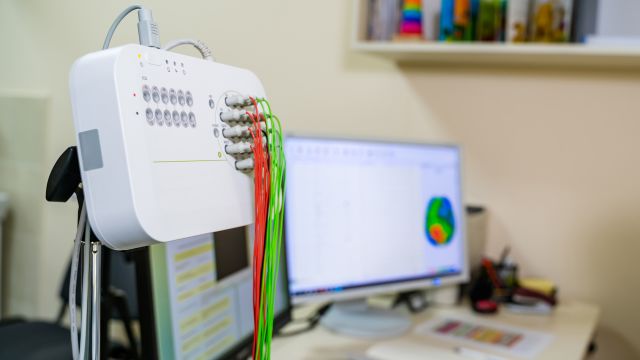Updated on February 9, 2024
According to the Centers for Disease Control and Prevention (CDC), nearly 3.5 million people in the United States are diagnosed with epilepsy. Epilepsy is a neurological (brain) disorder in which the normal pattern of activity of neurons (brain cells) becomes disturbed. It's marked by having recurring seizures that happen less than 24 hours apart.
Symptoms can range from unusual sensations and emotions to severe convulsions or loss of consciousness. Some people with epilepsy may experience several seizures a day, while others may go months, or even years, without one. And epilepsy is not always a lifelong diagnosis. Some forms are confined to certain stages of childhood.
Types of epileptic seizures
Neurologists have divided seizures into three major categories: focal onset seizures, generalized onset seizures, and unknown onset seizures.
Focal onset seizures are a type of seizure that occurs in just one part of the brain. Focal seizures can range from simple to complex seizures. During simple seizures, the person remains conscious but experiences unusual feelings, sensations or emotions. Complex seizures result in repetitious behaviors such as blinks or twitches or even loss of consciousness.
Generalized onset seizures are the result of abnormal neuronal activity on both sides of the brain. It may take many forms. In absence seizures, for example, the person may have twitching muscles and may appear to be staring into space. Tonic seizures cause stiffening of the muscles, generally in the back, legs, and arms. Other types of generalized seizures include the following:
- Clonic seizures are characterized by repeated jerking movements on both sides of the body.
- Atonic seizures involve a temporary loss of normal muscle tone and strength.
- Tonic-clonic seizures are a mix of symptoms including stiffening of the body and repeated jerks of limbs as well as loss of consciousness.
Unknown onset seizure is a third category. With this type, the location where the seizure begins is not known, but could be focal or general, and may be diagnosed as one or the other at a later time.
How to help someone having an epileptic seizure
As with any medical event, watching someone have a seizure can be a frightening experience. Fortunately, there are steps you can take to help ensure the person’s safety during a seizure. Here are some tips to follow:
- Note the time the seizure begins. If the seizure lasts longer than 5 minutes, you will need to call for help. Make sure someone remains with the person who is having a seizure.
- Do your best to keep the person from falling, by guiding them gently to the floor and making them as comfortable as possible. Place something soft and flat, like a folded blanket or shirt, underneath the person’s head and support the head so it doesn’t hit the floor.
- Remove glasses if the person is wearing glasses.
- If there are any obstructions in the way, such as furniture or other objects, remove them immediately.
- Try to position the person on their side so that any fluid or saliva can safely leave the mouth and the tongue can fall away to the side of the mouth for a clearer airway. According to the Epilepsy Foundation, it's physically impossible for someone to swallow their tongue.
- Do not force anything into the person's mouth, as this could result in injuries such as broken teeth.
- Do not try to restrain the person, as this could result in injuries such as a dislocated shoulder.
When the seizure is over, stay with the person, but make sure they have some space. Being surrounded by a crowd can be embarrassing and confusing. Reassure the person that they are safe and explain to them what happened.
Treating epilepsy
According to the National Institute of Neurological Disorders and Stroke (NINDS), with treatment, seizures can be controlled in 70 percent of patients. Treatment can include medications and surgical procedures.





